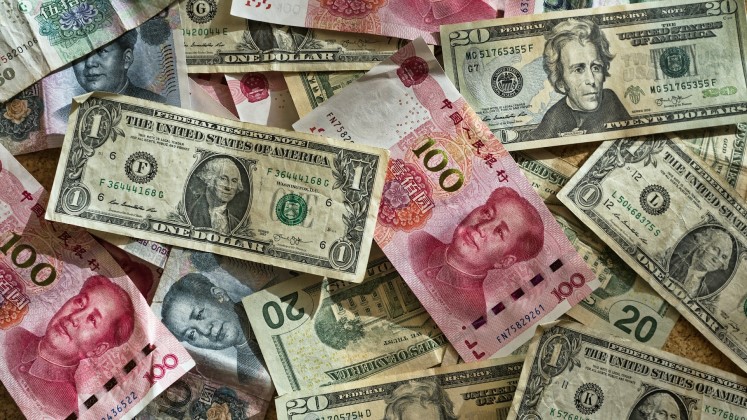
 International trade, vital for inclusive growth, faces shifts as preferential trade agreements (PTAs) expand beyond tariff reduction. “Deep” PTAs now cover diverse policy areas, requiring significant domestic reforms, but compliance can strain developing countries. Frederik Stender and Tim Vogel write that trade-related assistance could help implement these agreements, but increasing commitments could also jeopardise the effectiveness of aid for trade at the bilateral trade level.
International trade, vital for inclusive growth, faces shifts as preferential trade agreements (PTAs) expand beyond tariff reduction. “Deep” PTAs now cover diverse policy areas, requiring significant domestic reforms, but compliance can strain developing countries. Frederik Stender and Tim Vogel write that trade-related assistance could help implement these agreements, but increasing commitments could also jeopardise the effectiveness of aid for trade at the bilateral trade level.
Effective participation in international trade is praised by scholars and the 2030 Agenda for Sustainable Development as an important building block for inclusive economic growth. Despite this perception, tapping into international trade channels is not straightforward. While the multilateral trading system faces an uncertain future, bilateral and regional preferential trade agreements (PTAs) are flourishing as an attractive policy tool.
Recent PTAs are no longer just about reducing tariffs. Instead, they cover an increasingly broad range of policy areas beyond their traditional remit (Hofman et al., 2019). They frequently aim to harmonise trade-related standards between integration partners, call for better protection of intellectual property, limit the autonomy of national policymaking in the areas of competition and investment policy, or tighten environmental law and regulation in the fields of agriculture or extractive industries.
With the expanded focus, such “deep” trade agreements are also intended to achieve goals that go beyond the mere promotion of trade, such as the creation of a more integrated and rules-based trading system, fostering economic growth and cooperation between participating countries. Moreover, these agreements frequently pursue significant non-economic objectives, such as safeguarding the environment and bolstering human rights.
No pain, no gain
On the flip side of this trend, the effective implementation of an extensive portfolio of deep preferential trade agreement provisions often demands substantial domestic reforms, particularly for developing member countries.
The “costs” associated with these reforms can take various forms. At its core, compliance with non-tariff provisions contained in deep PTAs could increase the bilateral costs of trading under them. For example, recent research (Timini et al., 2022; Hoekman et al., 2023) shows that compliance with stricter labour standards can restrict exports – grist to the mill of those who fear that developing countries lose out in trade with high-income countries under common preferential trade agreements.
With a little help from a friend
Trade-related assistance can help ensure that the benefits of deep PTAs outweigh the costs of their implementation. Traditionally, aid for trade (AfT) has focused on helping developing countries build the trade capacity and infrastructure needed to reap the benefits of trade liberalisation. However, as PTAs become increasingly complex, channelling funds to support their implementation may not automatically align with addressing the most pressing national development priorities to improve developing countries’ (bilateral) trade performance.
In a recent paper, we provide a first empirical contribution to this puzzle by examining the effectiveness of bilateral aid for trade in deep North–South PTA relations. Interestingly, we find that while aid for trade can still boost trade within deep PTA relations, its effect decreases as the policy areas of a trade agreement expand. In essence, we find a tendency for a trade-off between the increased deepening of preferential trade agreements and the effectiveness of aid for trade.
Intricate affair
Several factors could account for these results. Overly stringent compliance requirements may redirect trade generated through aid for trade toward third countries with comparatively fewer bilateral obligations. Although aid for trade would still lead to positive outcomes, this transition would gradually diminish its effectiveness within the realm of formal trade partnerships. An alternative interpretation could be that compliance efforts in deep PTAs absorb significant portions of aid for trade, thereby limiting the resources available for potentially more impactful projects. This is especially notable as there is no observable alignment of aid for trade in deep PTAs.
Consider a practical example: When it comes to exporting agriculture from developing countries to Northern markets, the stumbling block often lies in non-compliance with trade-related standards, for example in the area of food safety. One possible solution? The harmonisation of regulations that are anchored in a number of recent trade agreements. However, this is no seamless process. Instead, given their comparatively lower regulatory base, convergence usually remains on the side of developing countries. And this adaptation comes at a price, requiring not just the establishment and upkeep of quality infrastructure but also shouldering the recurring costs of meeting certification requirements (see Tröster et al., 2023).
Compliance obligations with the increasing array of non-tariff provisions contained in deep PTAs could affect the necessary aid-for-trade funding in this domain. Incorporating environmental provisions, investment chapters, and commitment to reforms in competition policy and public procurement may necessitate adjustments in domestic law to align with new trade obligations. This could also bring forth administrative, transparency and monitoring requirements, potentially leading to increased and enduring expenditures on staff and expertise.
More generally, channelling funds into these sectors might divert crucial financial resources from more vital aspects of bilateral trade promotion, such as infrastructure development, unless aid for trade is increased.
Balancing act
Deep preferential trade agreements offer the potential to better integrate developing countries into the global economy while advancing broader development objectives. However, these benefits do not come without costs. Given the prevalent institutional and technical limitations and capacity constraints in meeting the growing commitments of PTAs in developing countries, aligning aid for trade in these agreements offers a quick remedy.
However, with aid for trade funds remaining constant in the short term, it appears more effective for donor countries to strategically weigh the compliance costs on developing countries against the non-trade benefits derived from common deep PTAs. Achieving this balance requires a precise identification of the capacity to implement deep PTA provisions and the financial and technical assistance needs of the developing countries involved. This process should ideally evolve through ongoing mutual dialogue, grounded in national development strategies to prevent conflicts with supply-side constraints in developing countries.
- This blog post first appeared at LSE Business Review.
- Featured image provided by Shutterstock.
- Please read our comments policy before commenting
- Note: The post gives the views of its author, not of USAPP– American Politics and Policy, nor of the London School of Economics.
- Shortened URL for this post: https://bit.ly/3S3eBfz






